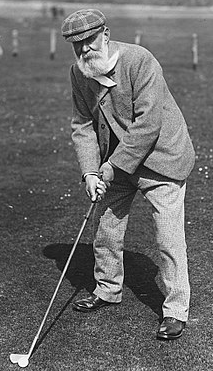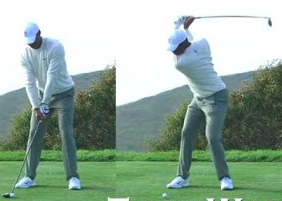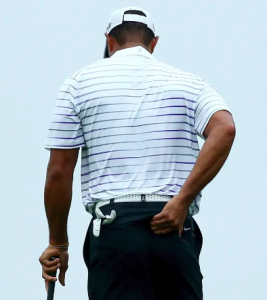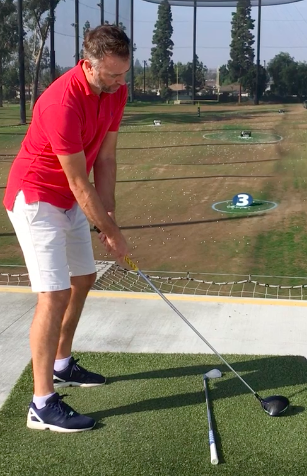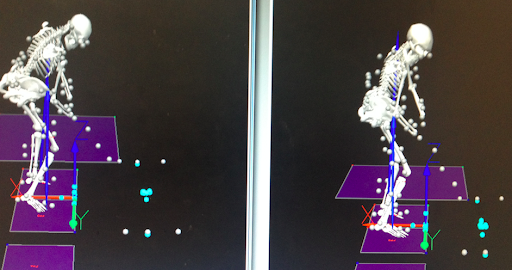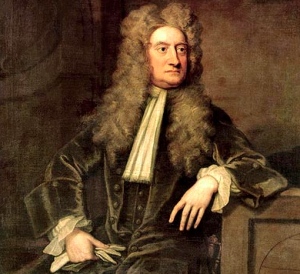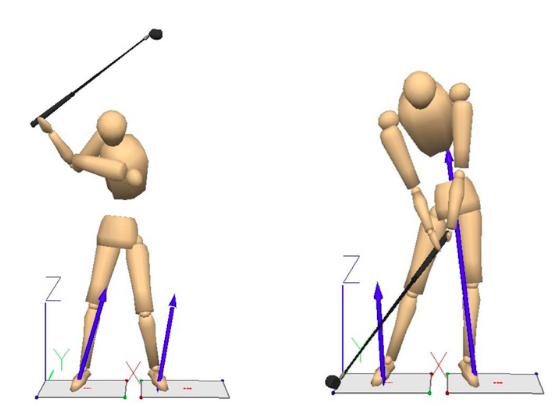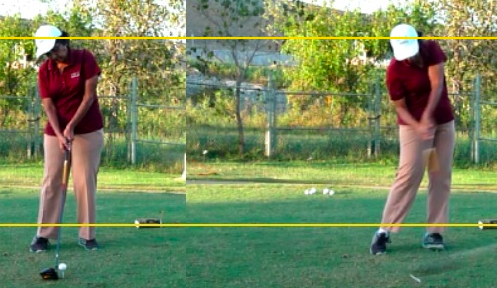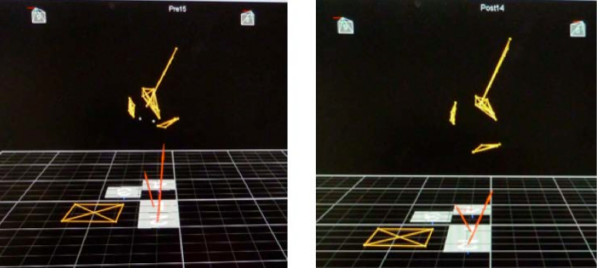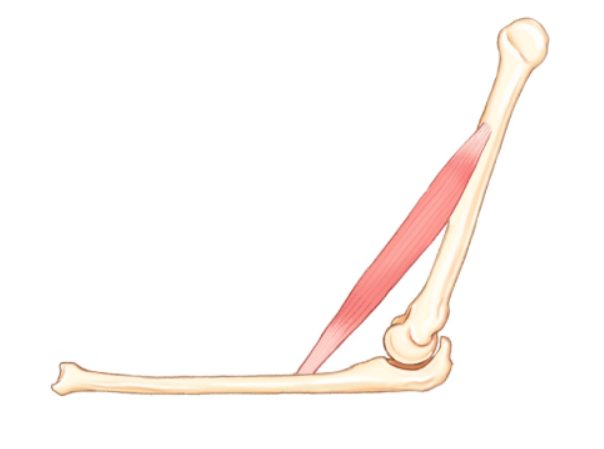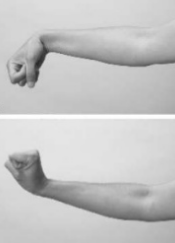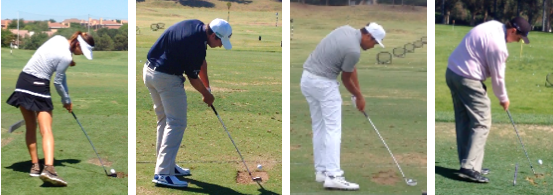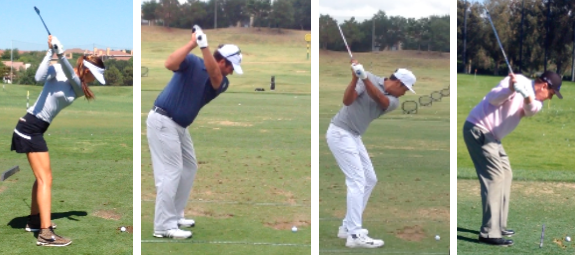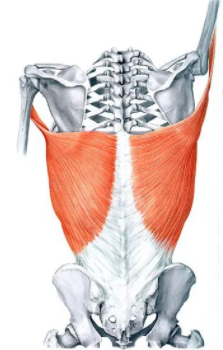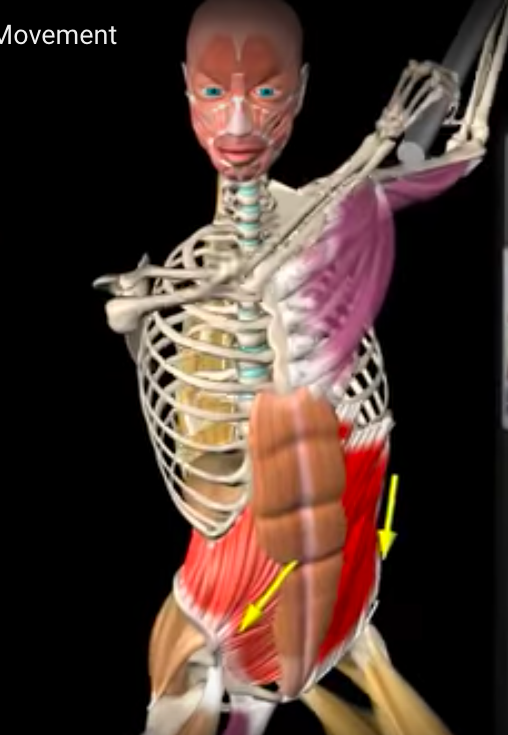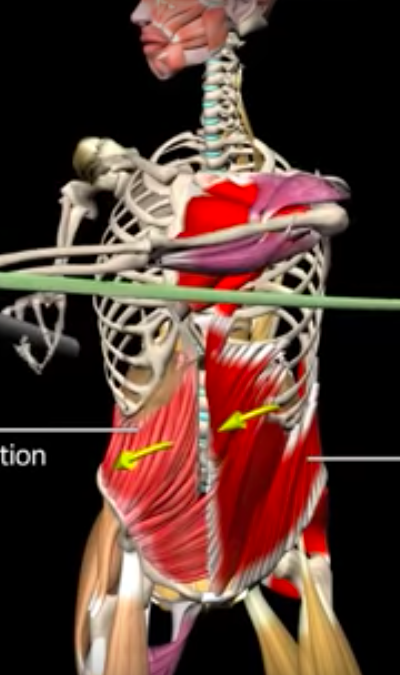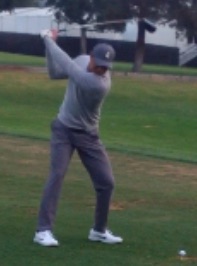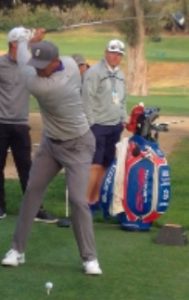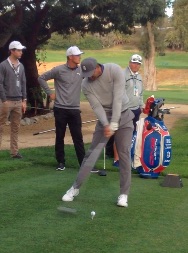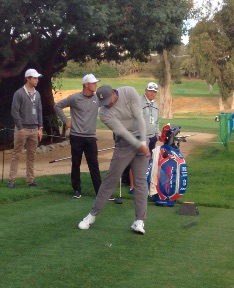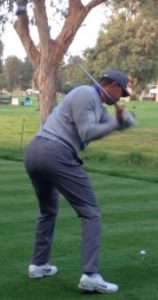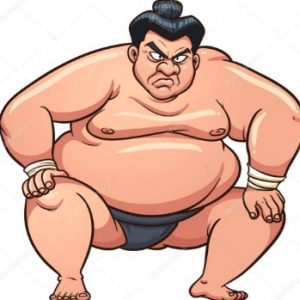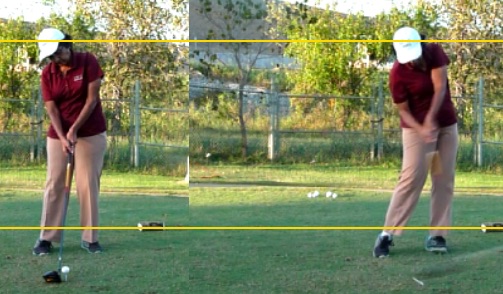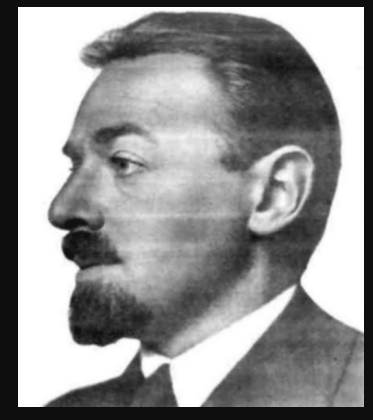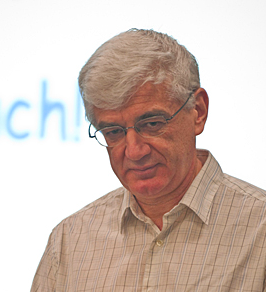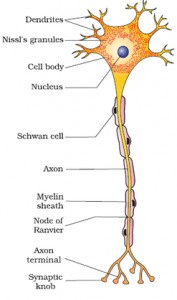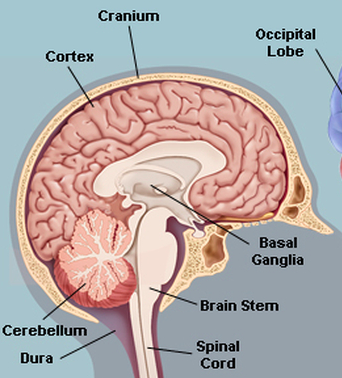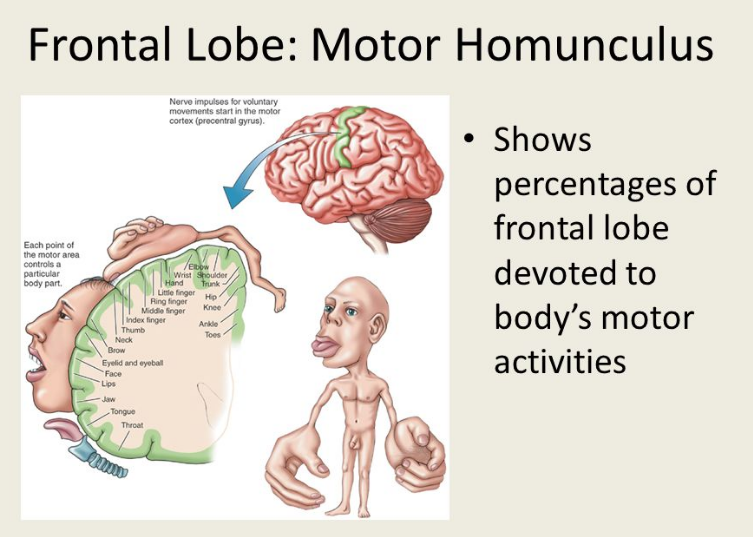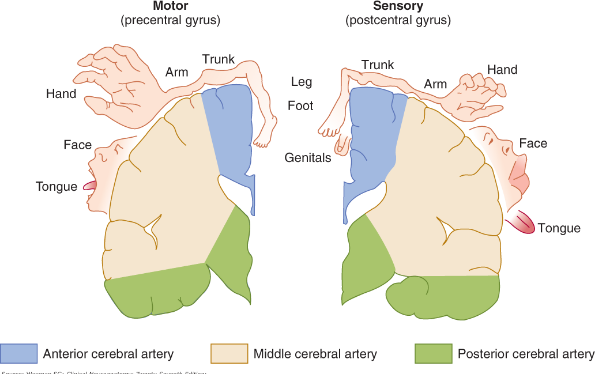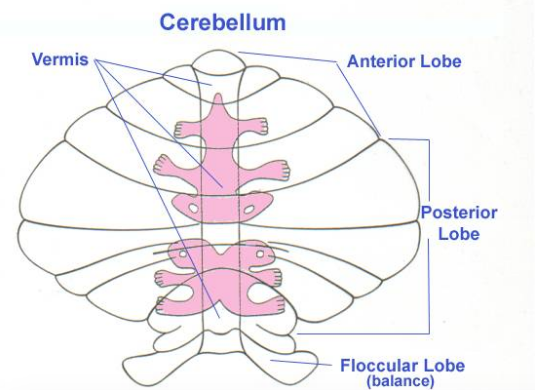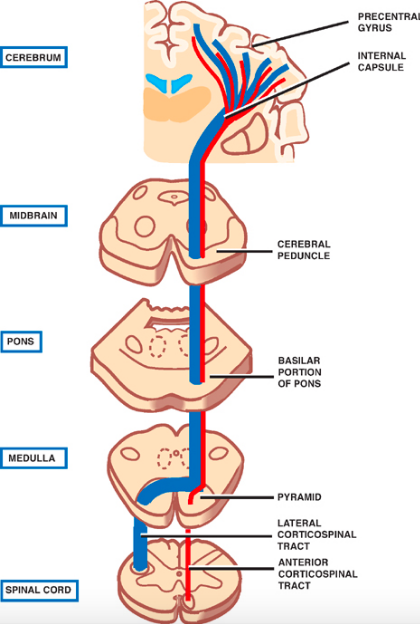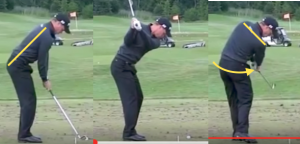Ground Reaction and the Golf Swing – What’s All the Fuss About?
Part I of II – forces and moments; center of pressure and center of mass
Once upon a time, a gentleman named Isaac Newton, unbeknownst to himself, created a storm in a teacup for golfers around the world. He did that by telling the world (one of three things he told us) that “to every action there is an equal and opposite reaction”. One of the best explanations for this, his Third Law, is in section 3.2 of a paper from Dartmouth University which literally explains Newton’s original writings from his book “Principia” (http://www.dartmouth.edu/~sci14/Sci13/13Day6/13Day6typeset.pdf).
It is important to note that a force (“action”) can be applied in any direction, not merely downwards. Any force being applied by an object will have a reaction from the object with which it is in contact. For instance, as a swimmer pushes off a wall, the swimmer exerts a force on the wall and the wall exerts an equal and opposite force on the swimmer. In any calculation, physicists only consider the action that takes place on an “object of interest”. So, as the force on the swimmer is of interest to biomechanists, the reaction from the wall would be factored into calculations, not the swimmer’s effect on the wall!
When a person is standing still on the ground, the force exerted by the person on the ground is his/her body weight (the effect of gravity on the body). If there was no other force involved, then the person would move downwards towards the middle of the Earth! We know this from the second thing Newton told us (his Second Law), which is that a force creates (or tries to create) an acceleration, in the direction in which the force acts. If the person is not sinking through the ground, there must be an equal force propping him/her up, preventing acceleration. And this force is termed “ground reaction force” (GRF).
I like to think of GRF, when it refers to human actions (as opposed to rockets being propelled forwards because the gas they eject backwards pushes them forwards) as “ground resistance force” or a resistance offered by the ground, a “purchase”, if you will, against which the muscles of the body can forcefully push off to create movement.
Biomechanists use a variety of tools to measure GRF. A force platform/plate is made up of strain gauges (among other materials), and as a force is exerted on such a material, it deforms, changing the electrical voltage of a circuit connected to it in proportion to the amount of force applied. A force platform is thus able to measure the reaction force from the ground in three dimensions – vertical (the largest) and two shear forces (resulting from the friction between the two objects in contact) which act in the front-to-back (antero-posterior) and the side-to-side (medio-lateral) directions.
A force platform can also tell us the location of the point through which the GRF acts. This location is called the center of pressure (COP), and is the location (with respect to the center of the force plate) of the point that the resultant GRF (a weighted average of all the small reaction forces acting at each point of a foot that is in contact with the ground) is acting from. Ideally, to be maximally beneficial for biomechanical calculations of the golf swing, two force platforms should be used – one under each foot. The two force plates can provide GRF in three dimensions (directions) for each foot, and COP under each foot, which are then combined as a type of average (weighted mean) to inform the quantity and location of GRF from both feet together.
Once again, GRF is a force, represented by the long (almost) vertical blue arrows (vectors) in the picture below. The point of application of (resultant) GRF for each foot is termed the COP and is represented by red dots. Finally, the location of combined GRF (no line to represent it) is the combined COP, represented by the yellow dot.
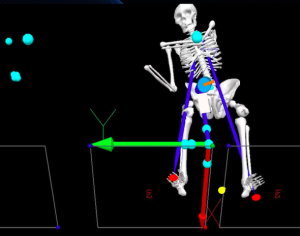
One other important measurement often used by biomechanists is the whole body’s center of mass (COM). It is the body’s balance point or the point of concentration of its mass. It is calculated as the (weighted) average of the COM of each body segment (the big blue ball in line with the pelvis in the picture above). Thus if the arms move towards a golfer’s trail side, the COM will shift very slightly to that side (slightly because the mass of the arms forms a small part of the mass of the entire body, and COM is a combination of the COMs of all individual body parts).
A final point to mention. Biomechanists usually think of “weight shift” as COM shift. Conversely, some biomechanists have assessed “weight shift” as COP movement or the quantity of GRF through each force plate, because they try to stick to what they feel golfers and coaches understand by weight shift.
Part II of II – three important body movements for the creation of club speed
Now for the nuts and bolts of how golfer-ground interaction has been understood and misunderstood by the various stakeholders – golfers, instructors, golf biomechanists. Research has shown that three downswing body movements are related to club speed – towards target weight shift, rotation of the torso, and vertical lift (also termed by some as “thrust” or “launch”). All three are measurable through a combination of GRF magnitude, and/or COP and COM positions.
Downswing weight shift. This has been assessed through either the magnitude of vertical ground reaction force under the lead foot during the downswing, or through the distance the whole body’s center of mass (COM) moves towards target. One review study (“A Review of Biomechanical Differences Between Golfers of Varied Skill Levels” by Lindsay et al., 2008, http://fitforegolf.com/uploads/3/4/1/4/34149388/lindsay_2008_pro_vs_rec_biomechanical_review.pdf) stated that skilled golfers had an average of 12.3 cm ± 3.7 cm of COM movement towards the target during the downswing, and less skilled golfers had both decreased, and delayed, weight shift. A large range of COM shift is thus difficult for most golfers who may not have the speed and strength of skilled golfers. Moreover, in my opinion, the reason many golfers have the ubiquitous slice is because their center of mass “hangs back”, while the body begins its inevitable rotation, making the clubface move across the ball.
One recent study of skilled golfers with a golf handicap of 3 or less (“Effects of the golfer–ground interaction on clubhead speed in skilled male golfers” by Han et al., 2019) found that the combined COP shifts quickly to the lead foot between the events of top of backswing and early downswing arms (lead arm parallel to the ground). The COM, in the meantime, shifted towards target at any time from the mid backswing to the early downswing (club shaft vertical position in both cases) events, and then decelerated. That would make for a rather variable phase for this movement to take place within.
The above study also found that a greater (perpendicular) distance between the COM and the lead foot GRF vector line was significantly correlated with club speed (medium correlation only). Such a distance is often referred to as the “moment arm” (thick horizontal orange line in the picture below). Moreover, the moment arm line is longest (maximum magnitude) close to lead arm horizontal in the downswing. When the moment arm is longer OR the GRF force is greater (a longer vertical blue GRF arrow), there would be greater angular rotation (thick orange arrow above the golfer in the picture below).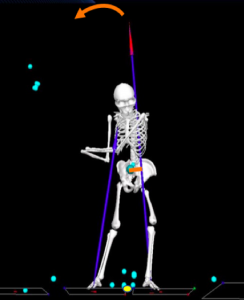
So, according to the study, larger moments (turning forces), associated with greater club speed, would happen when the distance between the COM and the lead side GRF vector was greatest. That could happen either if the lead side COP (location of pressure under the lead foot) shifted ahead of the COM really quickly, or the COM remained far behind. BUT the study found that the COM might, for some golfers, move forward earlier (during mid-backswing to early downswing positions) in the golf swing than the combined COP (yellow dot in picture above), which moves towards target between the top of backswing and lead arm horizontal during the downswing. Thus the golfer would really have to “hustle” to get the combined COP ahead!
Moreover, we know that only skilled golfers move the COM towards-target by an average of 12.3 cm. And the COM staying back may cause the dreaded slice! Even if golfers were to have the speed and strength to move pressure (COP) forward quickly, the COM being far behind to produce a longer moment arm (thick orange line) is problematic from a safety perspective too. The expected angular movement would cause greater trail-side side-bend (lateral flexion), which is known to be a big factor in low back pain. The orange arrow at the top of the picture above indicates the direction in which the COM-GRF relationship creates movement.
How to reconcile all of these facts? The fact of the matter, dear golfer, is that all of these research findings come from observational research. They can only tell it like they see it. They can only claim a correlation, not a causation. To claim a causation, one must rule out all other likely causes of the phenomenon being observed. And there IS another very big “likely cause”. That is the undoubted strength and speed of the golfers that were studied in the above studies. In other words, the golfers are probably able to shift the COM towards target quickly in the extremely limited time between having it as far as possible behind the combined COP at downswing lead arm horizontal as possible.
Finally, regardless of how the COP and COM move during the downswing, traditionally 75-80% of body weight has been expected to be on lead leg at ball impact, according to one study (“The effect of alterations in foot center of pressure on lower body kinematics during the five-iron golf swing” by Faux et al., 2019). However, the authors opined, for the stability of the swing which would minimize ball contact variability (and prevent knee injury!), the COM should be directly above the COP, at the time the COM is accelerating maximally. This was the first golf research looking at ways to minimize variability, and there is NO research on improving direction control or acquiring ideal ball trajectory.
The solution for all golfers (even if they’re highly skilled, because under certain circumstances and with certain body positions, their bodies too become incapable of correct sequencing of the many downswing movements) is to keep the COM and COP closer to the lead side throughout the backswing, so that during the downswing, anyone can move both COM and COP towards target with much less effort!
Downswing vertical lift aka launch aka thrust
It is known that the longer the length of the “lever arm” of any mechanical device, such as the lead arm-club system at impact, the higher the speed (linear velocity to be precise) of the golf club (http://waddengolfacademy.com/biomechanics/Sanders%20and%20Owens%20Hub%20Path.pdf
by Sanders & Owens, 1992). In order to achieve this, a very popular concept has been to ask golfers to do a squat-jump type movement during their swings. While some famous coaches like Mike Adams would have golfers do both the squat and the following jump-up during the downswing itself (https://www.youtube.com/watch?v=_OwN-m92b8E), others state that the squat should take place during the backswing (the best players can squat about 2” in the backswing and jump 2” up for a total excursion of about 4”), and the jump-up during the downswing (Greg Rose of TPI, https://www.youtube.com/watch?v=zeFCPaYFTzo). The vertical jump is described in the latter video as creating GRF, which “goes back up from the legs to the core”. This creation of explosive GRF, according to Rose, is the most important of four power sources (the other three, according to him, being rotary power which can also be harnessed from vertical thrust; arm chop; and wrist).
Once again, all these are correlational findings. Thus such movements are possible only for the super strong and fast athletes (and only in the right circumstances), and if they are super fast, they could probably jump up in mid-air during the downswing, land on their feet and still connect the ball with great club speed! One must always keep in mind that the entire downswing lasts a mere 1/3rd of a second or less. The less movements made during that tiny moment in time, the more efficiently the central nervous system can coordinate the rest. So, my concerns with the squat jump are: a) it would thrust both shoulders up equally, not merely the lead side which is what is needed b) what if someone (typically a slower someone) gets maximum height of the lead shoulder AFTER impact – wouldn’t a lot of the benefit be lost? c) what about the injury factor to the knees, the hips and the lower back with all the compression that those joints must be maintained in during the fast speeds of the golf downswing? d) Is there less smoothness to the downswing (measured as “jerk” or the rate of change of acceleration), resulting in inconsistent contact? e) Is there a simpler way to achieve maximum lead shoulder height at impact?
Once again, the solution for all golfers (even if they’re highly skilled, because under certain circumstances and with certain body positions, their bodies too become incapable of correct sequencing of the many downswing movements) is to simply stand up taller (lead side higher) and keep the lead side of the torso higher from address to impact (once again lead side higher)!
Downswing torso rotation
The third source of power from the body is torso rotation, which has been called a proximal – to – distal (pelvis before shoulders/thorax) rotation or a kinematic sequence. The main reason that this is so important is that the large, powerful core muscles of the body get stretched during the backswing and can therefore contract more forcefully during the downswing, much like the stretched elastic of a slingshot-catapult releases more forcefully. As the golfer pushes backwards through the trail foot and forwards through the lead foot (measured as antero-posterior shear forces through force plates), to create stability in those directions, the powerful trail side core muscles use the ground as purchase to rotate forcefully off of. This movement will happen without a golfer’s volition, because stretched muscles will contract!
Once again, research has shown that more skilled golfers are able to rotate to faster. In the words of Okuda et al. (“Trunk Rotation and Weight Transfer Patterns between Skilled and Low Skilled Golfers”, 2010, https://www.ncbi.nlm.nih.gov/pmc/articles/PMC3737954/), “Pelvic horizontal rotation in the downswing motion occurred significantly earlier with a rapid weight transfer to the lead foot in the skilled golfers while the low skilled golfers showed a delay in these motions”.
There are two important points we can assess from the study. Firstly, less skilled golfers cannot rotate and shift weight as fast, so perhaps the weight may not get shifted adequately to the lead foot before rotation begins, leaving “weight” behind and perhaps creating curved shots.
Secondly, note that the authors refer to the rotation as a “pelvic horizontal rotation”. However, golfers are typically asked to make a backswing by rotating the shoulders around a spine which is flexed forwards at address, resulting in an oblique position of the torso at the top of the backswing. From this position, a golfer’s pelvis is expected to fire on a mainly horizontal plane during late backswing or early downswing. As mentioned earlier, muscles that are stretched contract more forcefully. Which muscles have been stretched to be able to produce a horizontal downswing rotation from an oblique top of backswing torso position? The main muscle group for forceful downswing torso rotation is the trail side external oblique. This muscle group has both vertical and horizontal fibers. When the torso is rotated obliquely, the vertical fibers may be stretched to a greater extent, resulting in a more downward rather than targetward movement of the torso, and perhaps a more steep shoulder path (and thus arms-, and club-path) than desirable.
And once again, therefore, the solution for all golfers (even if they’re highly skilled, because under certain circumstances and with certain body positions, their bodies too become incapable of correct sequencing of the many downswing movements) is to position the body so that there is minimal and optimally timed torso rotation.
Kiran Kanwar, PhD (biomechanics + anatomy)
LPGA Master Professional (thesis in “types and causes of golf swing-related injury”
Golf teaching experience of 30+ years.
Website: www.mgs.golf

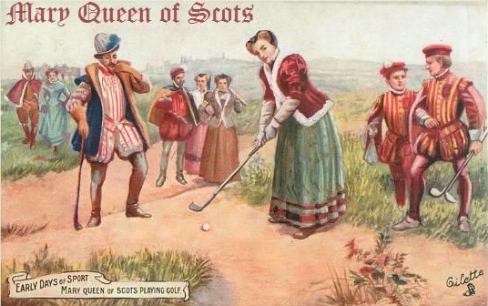 .
.